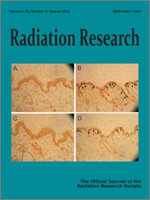Updated analyses of mortality data are presented on 46,970 workers employed 1948–1999 at Rocketdyne (Atomics International). Overall, 5,801 workers were involved in radiation activities, including 2,232 who were monitored for intakes of radionuclides, and 41,169 workers were engaged in rocket testing or other non-radiation activities. The worker population is unique in that lifetime occupational doses from all places of employment were sought, updated and incorporated into the analyses. Further, radiation doses from intakes of 14 different radionuclides were calculated for 16 organs or tissues using biokinetic models of the International Commission on Radiation Protection (ICRP). Because only negligible exposures were received by the 247 workers monitored for radiation activities after 1999, the mean dose from external radiation remained essentially the same at 13.5 mSv (maximum 1 Sv) as reported previously, as did the mean lung dose from external and internal radiation combined at 19.0 mSv (maximum 3.6 Sv). An additional 9 years of follow-up, from December 31,1999 through 2008, increased the person-years of observation for the radiation workers by 21.7% to 196,674 (mean 33.9 years) and the number of cancer deaths by 50% to 684. Analyses included external comparisons with the general population and the computation of standardized mortality ratios (SMRs) and internal comparisons using proportional hazards models and the computation of relative risks (RRs). A low SMR for all causes of death (SMR 0.82; 95% CI 0.78–0.85) continued to indicate that the Rocketdyne radiation workers were healthier than the general population and were less likely to die. The SMRs for all cancers taken together (SMR 0.88; 95% CI 0.81–0.95), lung cancer (SMR 0.87; 95% CI 0.76–1.00) and leukemia other than chronic lymphocytic leukemia (CLL) (SMR 1.04; 95% 0.67–1.53) were not significantly elevated. Cox regression analyses revealed no significant dose–response trends for any cancer. For all cancers excluding leukemia, the RR at 100 mSv was estimated as 0.98 (95% CI 0.82–1.17), and for all leukemia other than CLL it was 1.06 (95% CI 0.50–2.23). Uranium was the primary radionuclide contributing to internal exposures, but no significant increases in lung and kidney disease were seen. The extended follow-up reinforces the findings in the previous study in failing to observe a detectable increase in cancer deaths associated with radiation, but strong conclusions still cannot be drawn because of small numbers and relatively low career doses. Larger combined studies of early workers in the United States using similar methodologies are warranted to refine and clarify radiation risks after protracted exposures.
How to translate text using browser tools
7 March 2011
Updated Mortality Analysis of Radiation Workers at Rocketdyne (Atomics International), 1948–2008
John D. Boice,
Sarah S. Cohen,
Michael T. Mumma,
Elizabeth Dupree Ellis,
Keith F. Eckerman,
Richard W. Leggett,
Bruce B. Boecker,
A. Bertrand Brill,
Brian E. Henderson
ACCESS THE FULL ARTICLE

Radiation Research
Vol. 176 • No. 2
August 2011
Vol. 176 • No. 2
August 2011




